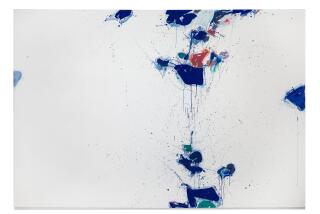THE PAINTER AND THE WILD SWANS by...
- Share via
THE PAINTER AND THE WILD SWANS by Claude Clement, pictures by Frederic Clement (Dial: $12.95; 32 pp.; ages 5-10). The frozen land of Siberia is where the wild swans in this picture book are born. When the cold becomes too raw, they fly south to Japan to warm themselves and rest. This legend tells of Teiji, the famous artist who watches a flock of these beautiful white birds pass overhead and is so awed, his latest paintings now seem empty. “ . . . (H)e had caught a glimpse of real beauty and . . . he could not paint unless he found it again.”
Teiji sells his worldly goods and begins to search for the swans so he may capture their elegance on canvas. But while crossing a lake, his boat hits ice and sinks, leaving him to struggle for shore where he curls into a frozen form. When he notices the swans watching him, feathers begin to cover his skin, wings appear at his side and he flies “away to join his brothers.”
Adults will stare at these pictures and be tempted to analyze. Is this a spiritual transformation? Does it symbolize beauty as that which is free and not something we can capture even in the metaphoric image of Teiji’s paper? Whatever the collaborators’ purpose, children will appreciate this effort simply because it’s a lovely story with lovely illustrations. Clement’s acrylic paintings evoke a majesty through the graceful strokes typical of Oriental art.
Another interesting thing here is the Japanese calligraphy--actually a poem independent of the story--that trails down the side of each picture. Its translation at the end of the book reveals it is Teiji the Swan remembering leaving his human life, “the way one takes off a coat.” While this isn’t a bilingual story, it is bicultural and will have more of an impact on those who read both Japanese and English. (Not to confuse matters, this was translated by Robert Levine from the French tale, “Le Peintre et les Cygnes Sauvages.”)
THE THREE WISHES: AN OLD STORY by Margot Zemach (Farrar, Straus & Giroux: $13.95; ages 3-6). The author/illustrator of “It Could Always Be Worse” reworks the traditional tale of three wishes granted for a good deed. Here a woodcutter and his wife rescue an imp and are told to “wish wisely.” But they begin to argue and, to their astonishment, a long string of sausages soon hangs from the husband’s nose. With just one wish left, they must consider the meaning of happiness.
More to Read
The biggest entertainment stories
Get our big stories about Hollywood, film, television, music, arts, culture and more right in your inbox as soon as they publish.
You may occasionally receive promotional content from the Los Angeles Times.










